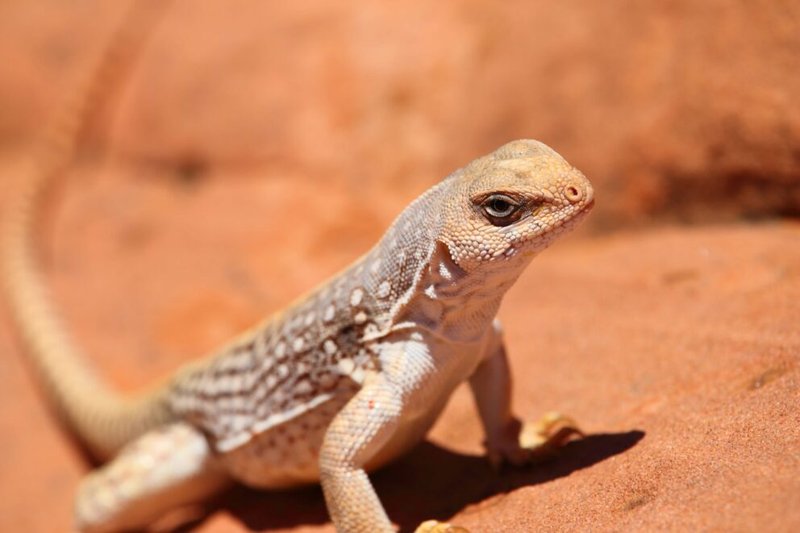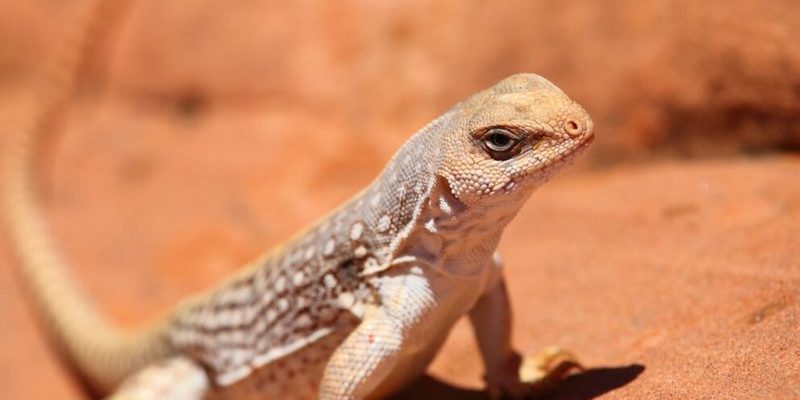
Desert Iguanas, native to the arid regions of the southwestern United States and northwestern Mexico, can reach impressive sizes, and understanding this can help potential owners prepare the right environment for them. In this article, we’ll dive into how big these lizards get and what you need to know about setting up their enclosure.
Understanding the Size of Desert Iguanas
Desert Iguanas are generally medium-sized lizards. On average, they grow between 24 to 36 inches in length, although some may reach even larger sizes. The size can be attributed to both their genetics and environmental factors. When you think about it, it’s similar to how people can be tall or short based on their family and surroundings.
Their bodies are elongated, with a long tail that can sometimes be even longer than their body itself. This tail is not just for show; it helps them balance and maneuver through their rocky habitats. If you picture a gymnast flipping through the air, that’s how agile these creatures can be in their own natural environment!
Weight and Growth Factors
Alongside length, the weight of a Desert Iguana typically ranges from 0.5 to 1.5 pounds when fully grown. It’s important to note that weight varies based on their diet and health. These iguanas thrive on a diet rich in leafy greens, fruits, and vegetables, which helps them grow strong and healthy.
You might be wondering how quickly they reach their full size. Generally, Desert Iguanas grow rapidly during their first few years, and then their growth starts to slow down. By the time they reach around three years of age, they are usually at their full size. Just like us humans, they go through growth spurts, and their environment plays a huge role in that development.
Enclosure Requirements for Desert Iguanas
Creating the perfect enclosure for your Desert Iguana is crucial for their well-being. These lizards are most comfortable in a larger setup—ideally at least 75 gallons. If you’re thinking about keeping one, consider using a spacious terrarium that allows them enough room to roam and explore.
The height is also important because Desert Iguanas are known to climb. A tall enclosure with branches and platforms can mimic their natural habitat and keep them active. Think of it as building a miniature jungle gym for your lizard buddy!
Temperature and Humidity Needs
One big part of setting up an enclosure is getting the temperature right. Desert Iguanas like to bask in the sun, so you’ll need a heat lamp to create a warm spot, ideally around 100°F. They also need a cooler area to retreat to when they get too warm.
A good temperature gradient—ranging from about 75°F to 90°F—is essential for their health. As for humidity, these lizards prefer a dry environment, but you can mist the enclosure occasionally to keep things cozy. Balancing temperature and humidity is like cooking a perfect meal; you need the right ingredients to get it just right!
Substrate Choices
When it comes to the substrate, or the material at the bottom of the enclosure, you have a few options. Many owners prefer sand, as it resembles their natural desert environment. However, it’s essential to ensure that it is safe and won’t cause impaction if ingested.
Alternatively, you could go for paper towels, which are easy to clean and great for hatchlings. Using a mix of substrate can also create a more natural feel while being practical for cleaning. The key is to make sure it’s comfortable for your Desert Iguana—like laying down a soft rug in your living room.
Accessories and Enrichment
Don’t forget to add accessories to your Desert Iguana’s home! Plants, rocks, and hiding spots can help make the enclosure feel more natural and engaging. You can use safe, non-toxic plants like Hibiscus or Pothos. These not only provide shade and enrichment but also create a visually appealing environment.
Lighting is also crucial; a combination of UVB lighting will help your lizard absorb calcium, promoting healthy growth. Think of it as providing your pet with a sunlit terrace where they can thrive. Adding logs for climbing can activate their natural instincts, making life in captivity much more enjoyable.
In summary, Desert Iguanas can grow up to 36 inches long and weigh between 0.5 to 1.5 pounds. Understanding their size helps in preparing the right habitat, which is vital for their health and happiness. A spacious, well-maintained enclosure—with the right temperature, humidity, and enriching accessories—will ensure your iguana thrives as part of your family.
Owning a Desert Iguana is like embarking on a rewarding journey. With the right knowledge, you can create a beautiful, safe home that mirrors their natural habitat. So, if you’re ready to welcome a Desert Iguana into your life, prepare to enjoy the fascinating world of these resilient reptiles!

